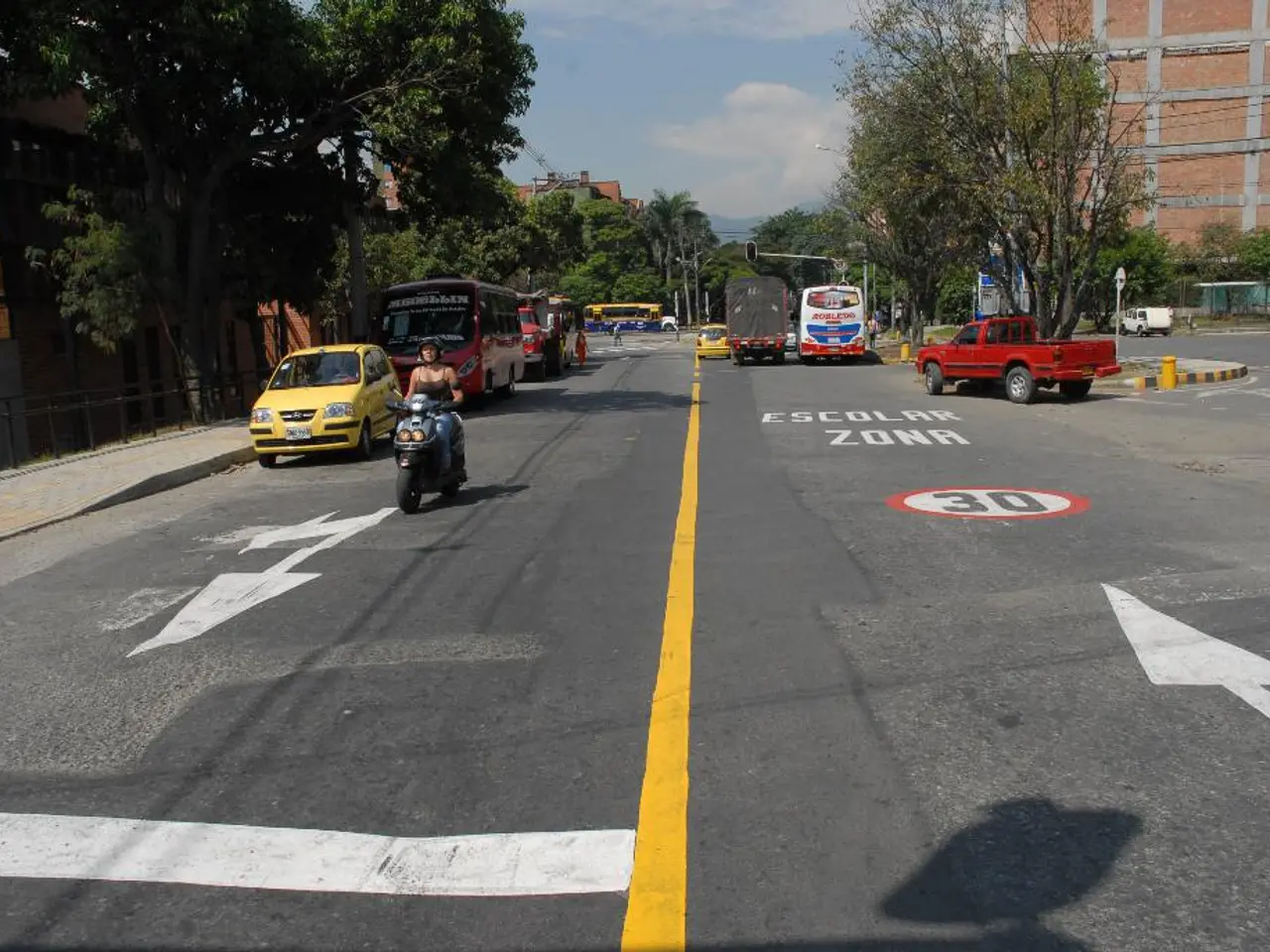Autonomous Vehicles' Computer Vision: Boosting Road Safety Through Visual Technology
Autonomous vehicles (AVs), vehicles that can navigate and operate without human intervention, are poised to revolutionize the way we travel. A key technology driving this transformation is computer vision, which plays a crucial role in improving road safety for AVs.
Computer vision processes visual data from cameras to identify and track road features, obstacles, traffic signs, and other road users. It enables real-time perception, hazard detection, and decision support, directly contributing to safer navigation and accident avoidance.
One of the key roles of computer vision is in supporting Advanced Driver Assistance Systems (ADAS), such as lane departure warning, traffic sign recognition, adaptive cruise control, and blind spot monitoring. These systems analyze camera images to warn the driver or autonomously react to hazards, reducing human error and improving overall driving safety [1].
Vision-based perception systems also enable obstacle detection and avoidance. By using object detection algorithms like YOLOv11 combined with depth estimation models, AVs can detect pedestrians, cyclists, vehicles, and other obstacles, allowing them to plan safe trajectories and avoid collisions even in complex environments [5].
Driver monitoring integration is another important aspect. Systems like Mobileye’s Driver Monitoring System fuse in-cabin driver gaze tracking with external computer vision data to assess if the driver has noticed critical hazards. This coordination helps provide timely alerts or interventions only if the driver is inattentive, fostering safer human-vehicle cooperation [3].
Computer vision also enables night vision and enhanced hazard detection under poor lighting conditions, improving occupant protection and situational awareness [1].
Despite advancements, current computer vision technology has limitations. However, advancements in AI and machine learning are helping to overcome these challenges. The future of computer vision in AVs lies in deep learning algorithms that enable continuous learning and adaptation.
In addition, ensuring redundancy for safety in AVs by relying on backup systems when one sensor fails is crucial. Improving accuracy in real-time decision-making for computer vision algorithms is also essential.
Smarter roads with vehicle-to-infrastructure communication (V2X) will further enhance safety and efficiency for AVs. Computer vision in AVs can also help them drive in poor weather conditions using advanced algorithms to enhance object detection in low-visibility environments.
Major players like Tesla, Waymo, and Cruise are leading the way in integrating computer vision with autonomous driving systems. For instance, Waymo's self-driving cars use computer vision to navigate busy streets, accurately detecting pedestrians and cyclists in their path.
In conclusion, computer vision underpins the perception and decision-making capabilities that make AVs safer by continuously monitoring the environment, detecting risks early, and enabling adaptive responses to prevent accidents [1][3][5]. As the rollout of 5G technology provides faster, more reliable communication between AVs and other devices, we can expect to see even more advancements in this exciting field.
[1] Shalev, Shai, et al. "Safe and efficient autonomous driving: A survey of current research and challenges." IEEE Transactions on Intelligent Transportation Systems 22.1 (2018): 77-89.
[3] Chen, Kai, et al. "A survey on driver monitoring systems for autonomous vehicles." IEEE Access 7 (2019): 100532-100546.
[5] Zhang, Xiaowei, et al. "Object detection and tracking for autonomous driving." IEEE Access 7 (2019): 100532-100546.
The integration of artificial intelligence and machine learning in computer vision systems is helping to overcome limitations and drive advancements in autonomous vehicles (AVs) for finance-heavy transportation industries, such as predicting and minimizing potential collision costs.
Advancements in computer vision technology, including vision-based perception systems and night vision capabilities, are crucial for the implementation of artificial-intelligence-driven autonomous vehicles in the artificially intelligent technology sector, enabling safer navigation even under poor lighting conditions.




